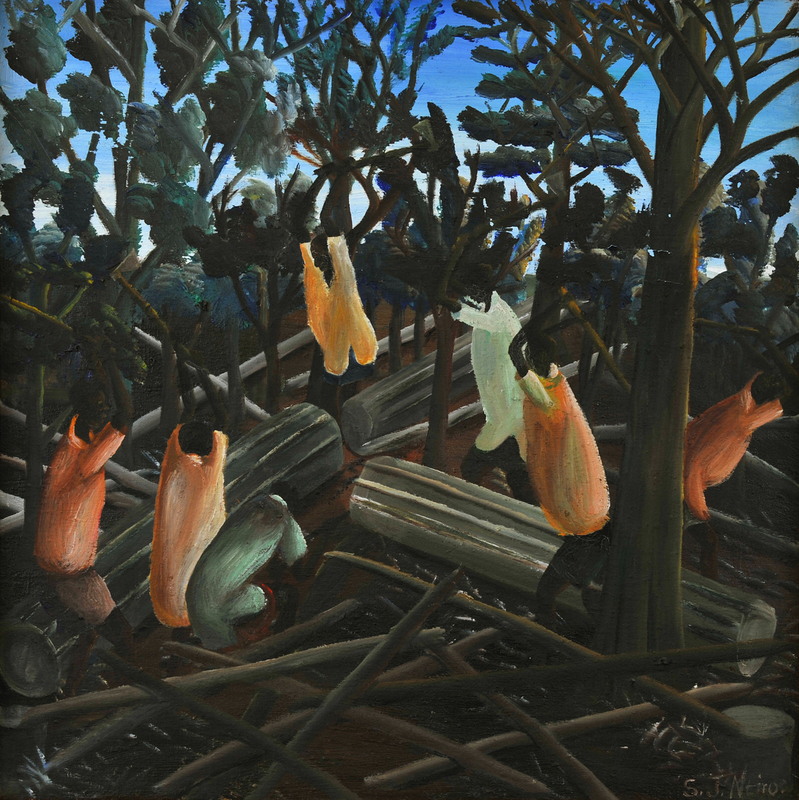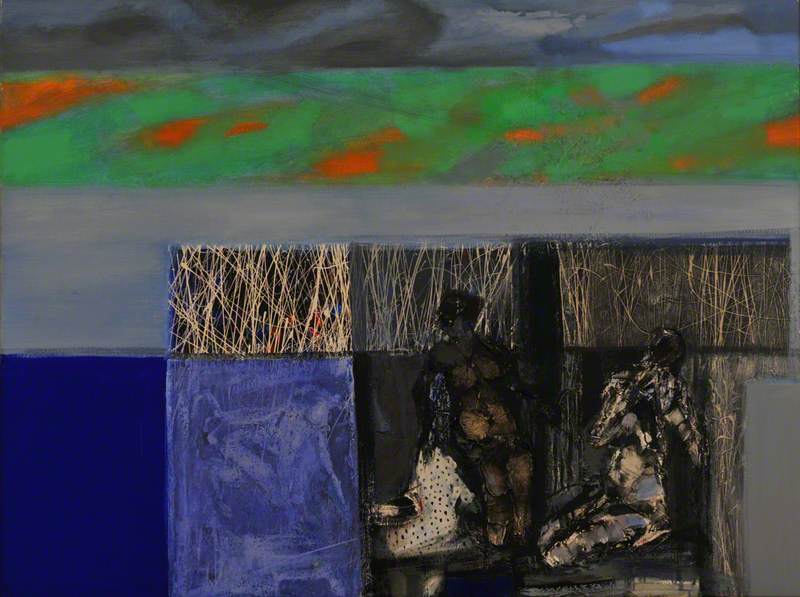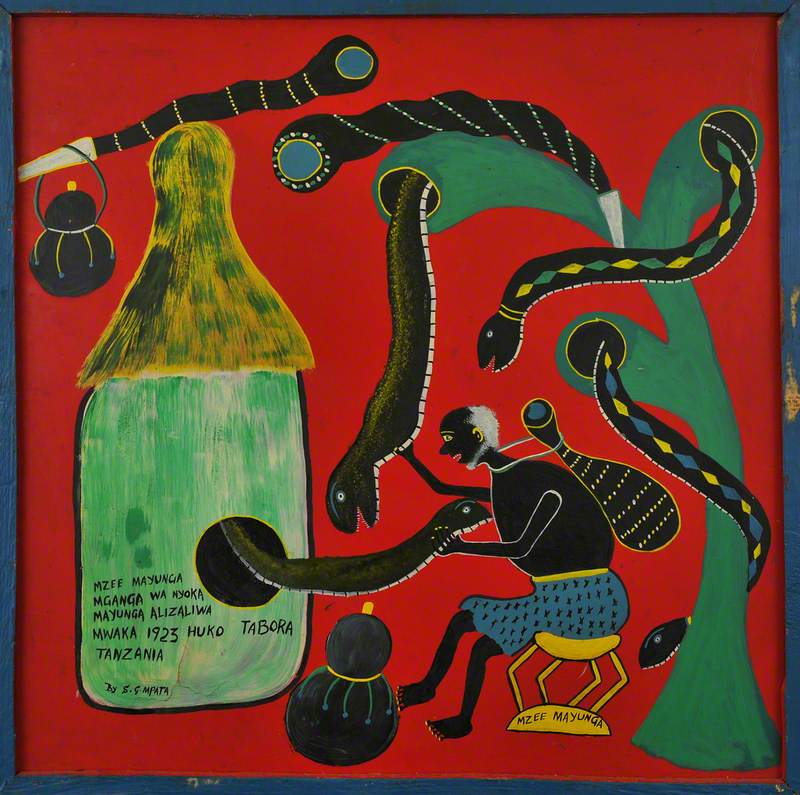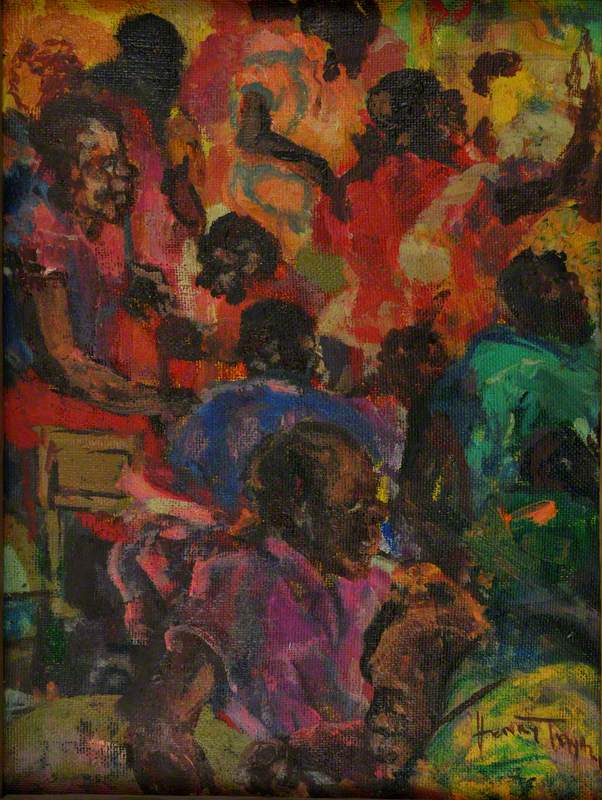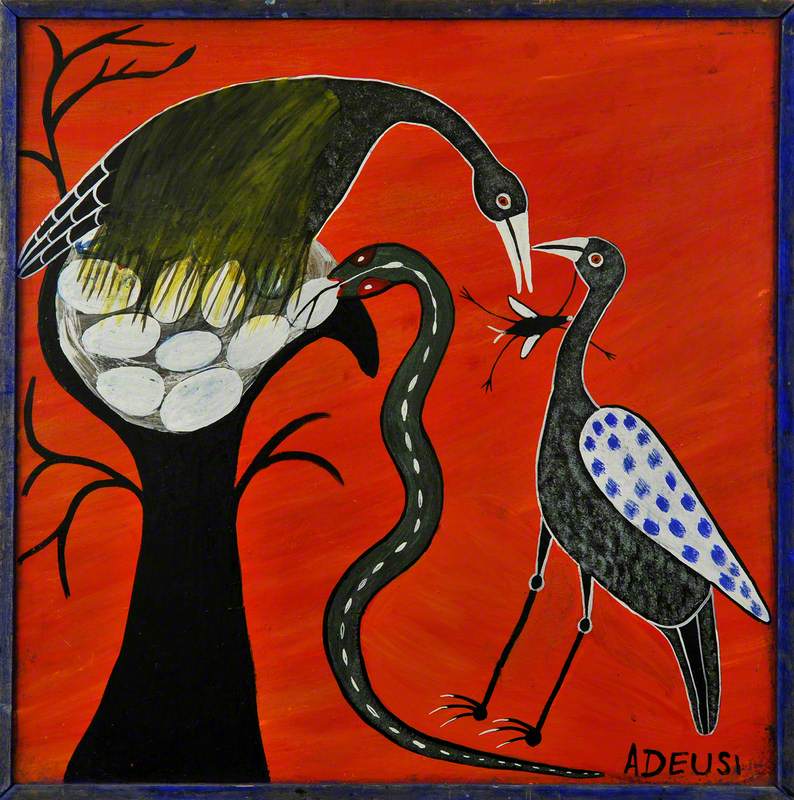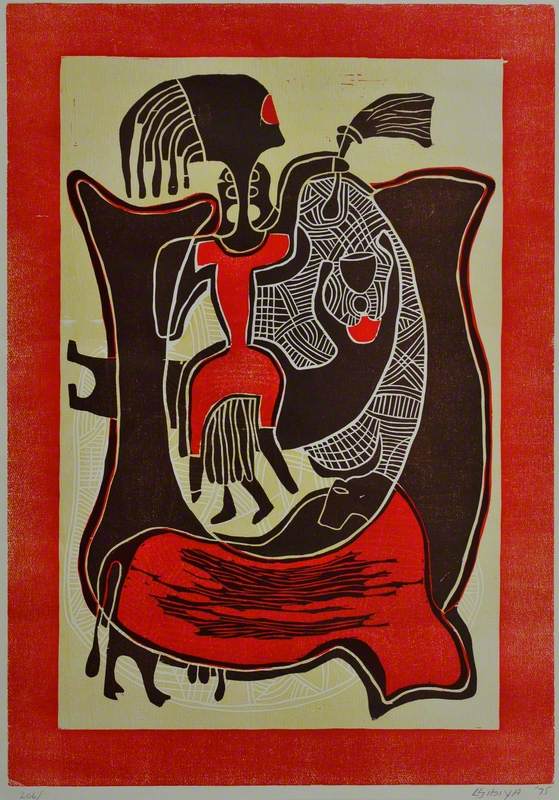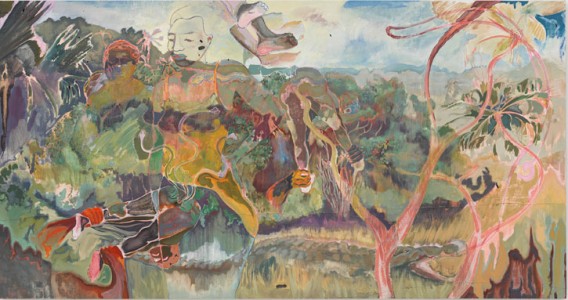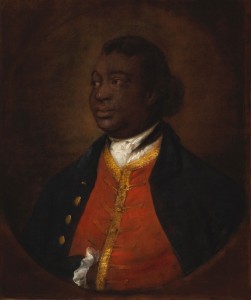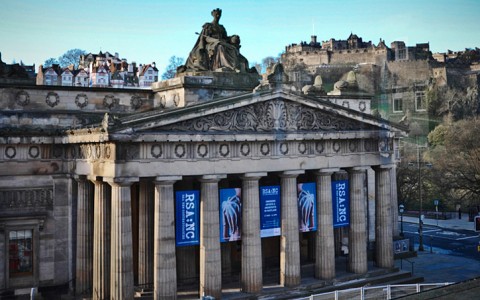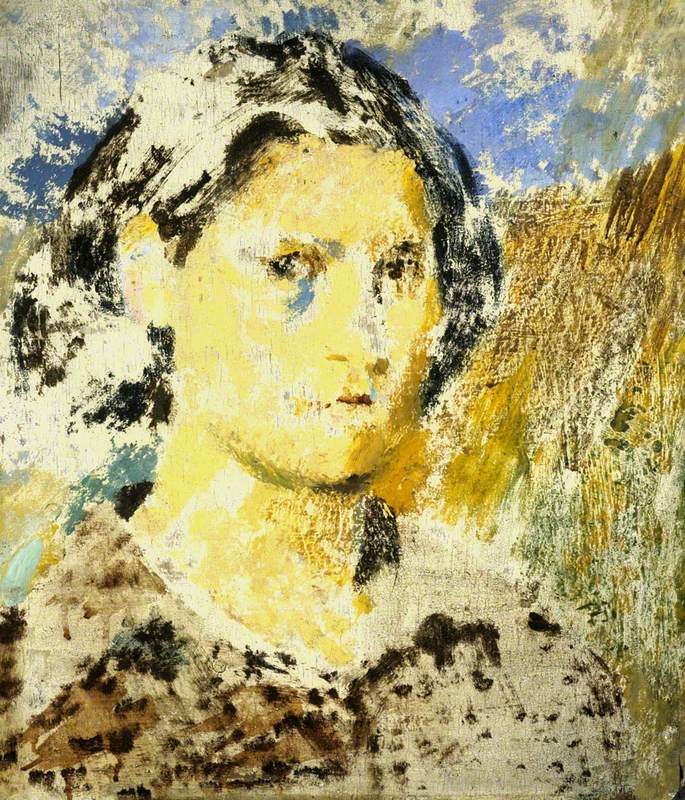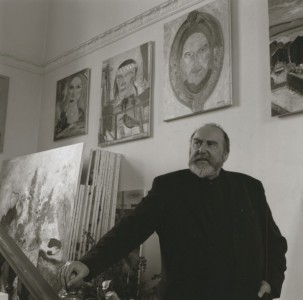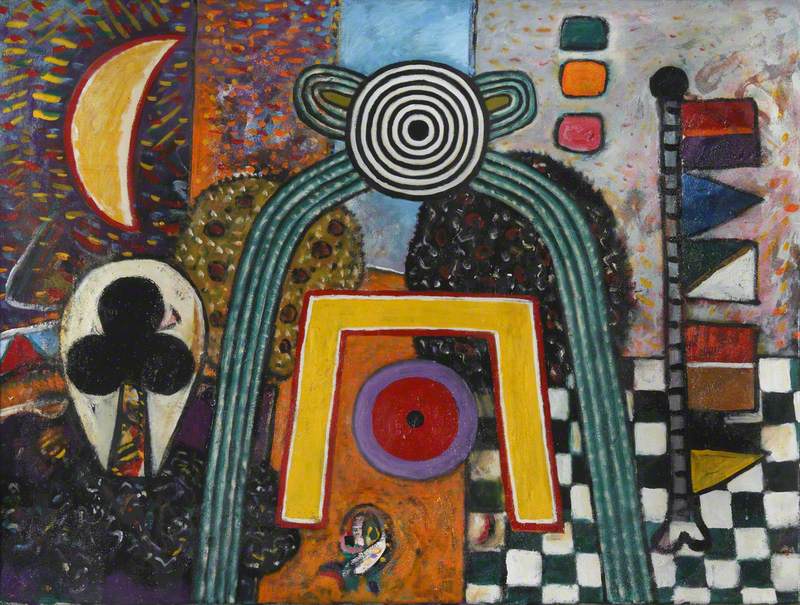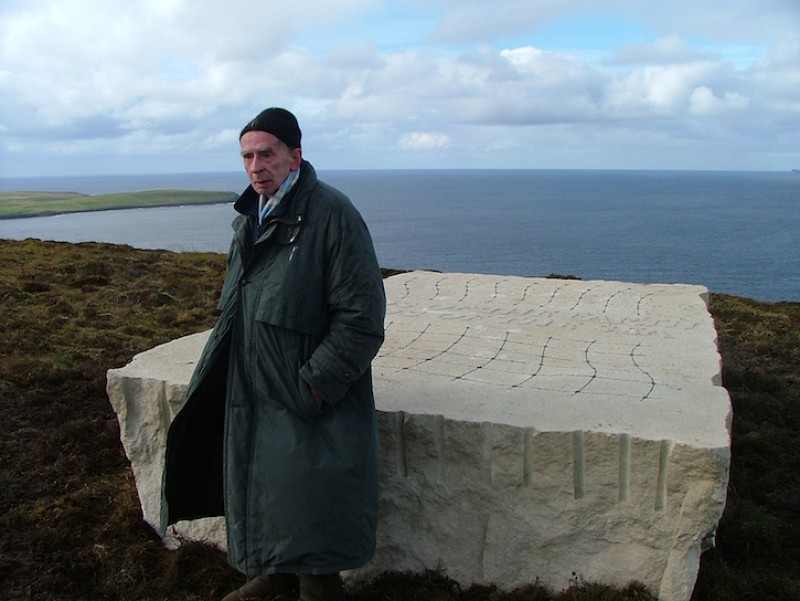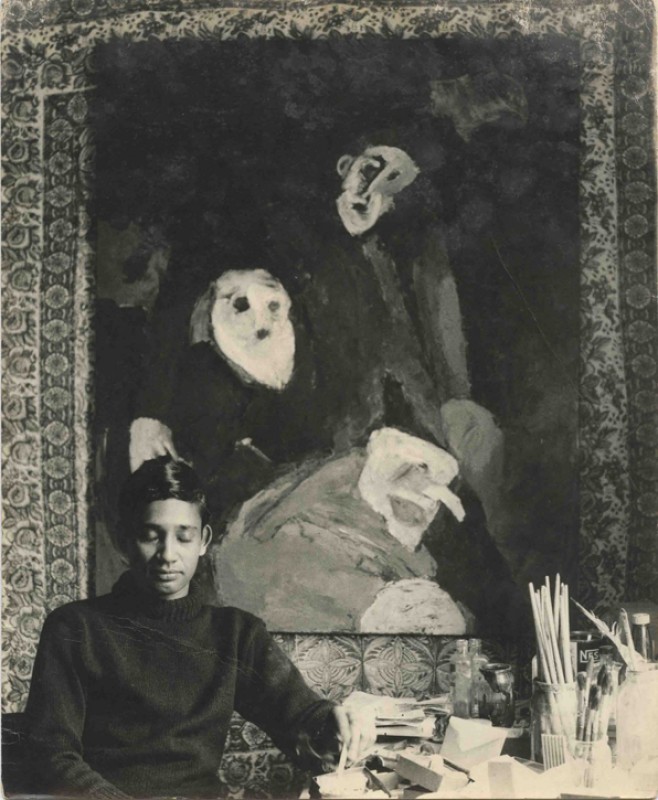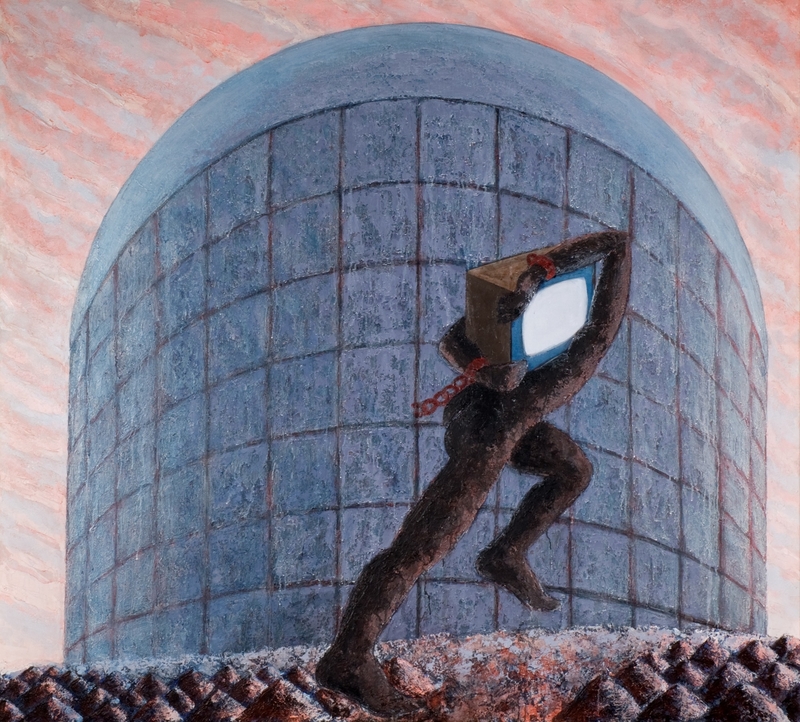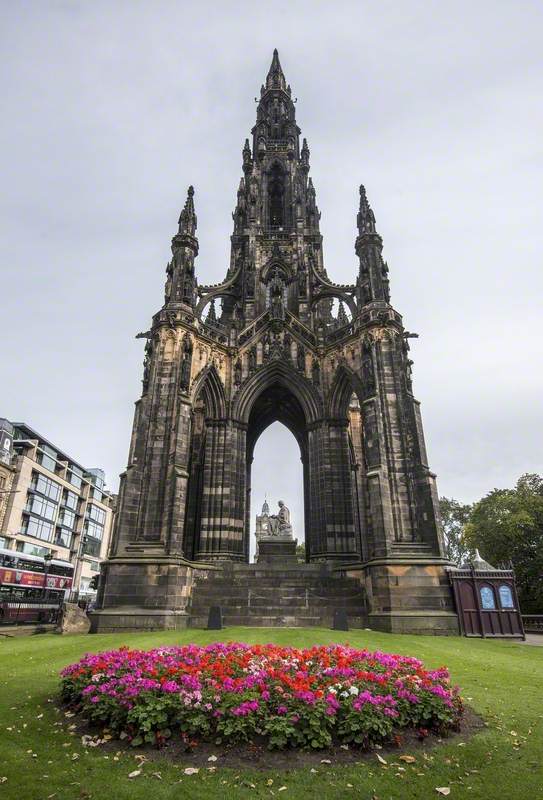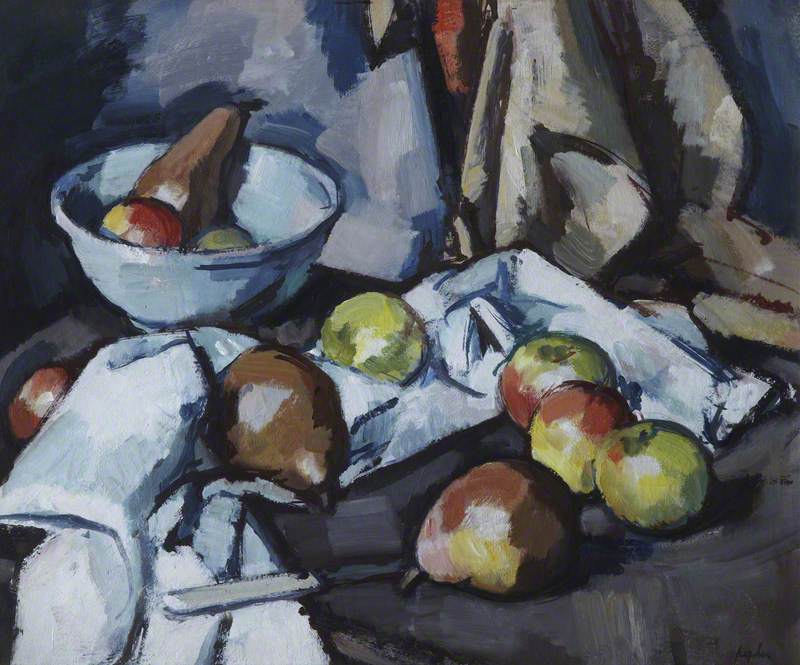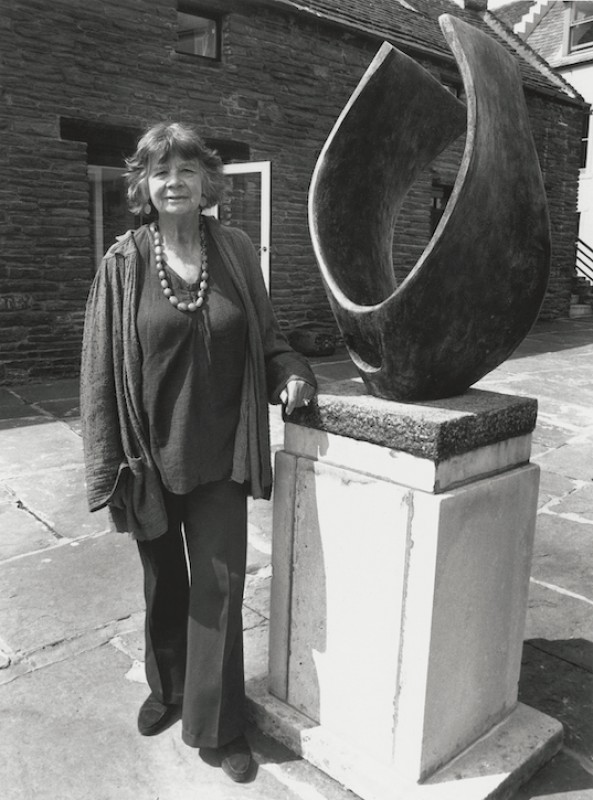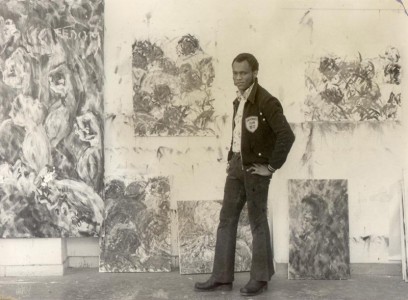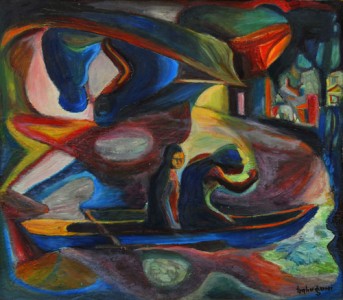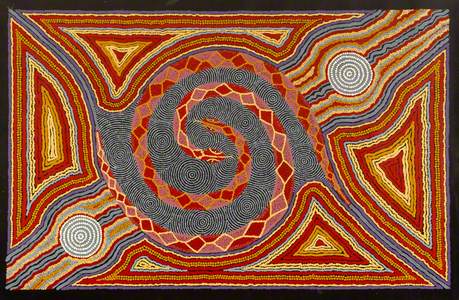In May 1967, a painting of men cutting down trees arrived in Dunoon, the small seaside town on the Cowal peninsula, in the west of Scotland. The painting was by the Tanzanian artist, Samuel J. Ntiro, and was posted from Dar es Salaam by Ntiro himself to T. G. Henderson, Argyll County Council's Director of Education.
Ntiro's painting, Chopping Wood, had been bought by the renowned writer Naomi Mitchison for a council-funded initiative called the Argyll Collection. Mitchison had founded the latter in 1960 during her time as Argyll County Councillor, when she lobbied Henderson for funds to acquire modern art for Argyll's schools. Mitchison believed that children in rural Scotland, many of whom lived several hours from major museums, deserved to have access to modern art, to inspire creativity and pride.
From 1960 onwards, Mitchison worked with the art teacher Jim Tyre to buy paintings and prints. A Glasgow School of Art-trained artist, Tyre was well placed to become Argyll's Art Advisor. Once processed in Dunoon, Tyre would drive the artworks around in a van, holding small exhibitions in schools from Campbeltown to Oban.
Most of the nearly 180 works that Mitchison and Tyre acquired over the 20 years in which they built the collection came from Scottish artists. With modest means and savvy selection, they acquired works by notable individuals, including Sir Robin Philipson, Joan Eardley and Alan Davie.
Around the same time that Mitchison founded the Argyll Collection, she met a young man called Linchwe from then Bechuanaland (now Botswana), who was studying in the UK. Linchwe was in line for the chieftaincy of the Bakgatla-ba-Kgafela people, who live on borderland between Botswana and South Africa.
In 1962, when Linchwe was installed as Bakgatla Chief, Mitchison travelled to the administrative capital, Mochudi, making the first of many journeys there over the next two decades. Travelling to Mochudi, Mitchison stopped in cities such as Nairobi, Dar es Salaam and Lusaka, where she began to purchase art, acquiring at least 12 paintings and prints for Argyll in the later 1960s and 1970s.
Naomi Mitchison
photograph by Struan Robertson (1927–2011) 
In 2018, while looking for an example of Ntiro's work, I found Chopping Wood online. It had been digitised on Art UK, which led me to the Argyll Collection. I quickly found that Ntiro was not the only African work in the collection, but that most of the others had missing names, titles or other incomplete information.
A research partnership with Madeleine Conn at Argyll and Bute Council was founded to uncover the stories of these paintings and prints. Over the course of a year, working with two research assistants, Meredith Loper and Elikem Logan, contacts in the US, Germany, Uganda and Tanzania and archival documents, we reattributed 10 out of 12 works, and pieced together their journeys to Argyll.
The African modern artworks that Mitchison acquired for Argyll are, indeed, historically significant. Many of them came from leading art schools, galleries and workshops in the new nations of Uganda, Kenya and Tanzania. Made by professional and self-taught artists, they offer a range of insights into the concerns and priorities of African modern artists in the wake of independence from colonialism.
Amongst the first works that Mitchison bought were Ostriches by Hezbon Owiti, purchased from the ChemChemi Creative Center in Nairobi, and The Fishermen by Louis Mbughuni, then an undergraduate student at the art school at Makerere College in Uganda. Owiti was a self-taught artist, inspired by Pan-Africanism and interested in the symbolic significance of animals. His thickly painted Ostriches points to their association with power in East Africa, their feathers, in particular, used on ceremonial dress such as Maasai warrior enkuraru headdresses.
Mbughuni's The Fishermen (c.1965) conveys an interest in the expressive qualities of colour, something that students at Makerere in the 1960s were encouraged to explore. The canvas is luminous in rendering a nocturnal scene. Mbughuni, who went on to become an important Tanzanian playwright and professor, reports that the painting recalls Jesus's recruitment of disciples among fishermen, a reminder of the Christian missionary significance in East Africa.
A work by Henry Tayali, a Zambian artist who also studied at Makerere, captures the energies of a packed bar. Tayali is known for his evocative renderings of bustling social spaces, and for his commitment to depicting the hardships of the working classes. Though the colour in this painting suggests vibrant interactions, the downcast profiles in the foreground point to Tayali's interest in spotlighting the weariness of Zambia’s working men.
For #ValentinesDay: Jak Katarikawe, from 'The Lovers' series [1960s-1980s], c. 1967, wax crayon on paper.
— Kate Cowcher (@katecowcher) February 14, 2021
With gratitude to the Katarikawe family for new title information. #ArgyllCollection pic.twitter.com/SfnDy3OpXm
Most of the African artists who Mitchison bought from were young undergraduate students or self-taught artists holding their first exhibitions. Many, however, went on to have storied careers. A wax crayon rendering of an intimately entwined couple, for example, came from one of the first exhibitions of Ugandan artist Jak Katarikawe. Jak subsequently enjoyed international acclaim and influenced many contemporary artists, including the painter Michael Armitage.
Ntiro, who mailed his work to Dunoon, was an exception. Already in 1967, he was one of East Africa's leading artists and had served as a diplomat to the UK. He'd had exhibitions in London and New York, and his paintings were in major collections including the Museum of Modern Art. Unsurprisingly, Mitchison expressed excitement in having acquired Chopping Wood.
The painting is characteristic of Ntiro's work. He is primarily known for his depictions of life among his people, the Chagga, in the foothills of Mount Kilimanjaro. Ntiro had trained at Makerere and the Slade, developing a painting style that used an earthy palette and a condensed sense of perspective to foreground work and life in Chagga villages. Art historians Angelo Kakande, Dominicus Makukula and Mario Pissarra have all commented on Nitro's de-emphasis of the individual and celebration of collective labour, a theme that chimed with Tanzania's embrace of African socialism in the 1960s.
Mitchison was aware of Ntiro's commitment to his country. She wrote to Tyre that they were lucky to acquire his painting just before he took on the job of Commissioner of Culture, a position that prevented him from selling his art.
The Argyll Collection itself stagnated after Tyre's retirement in the 1980s. In the 2000s there were efforts to revive interest in it, with emphasis on the notable Scottish holdings. Given the patchiness of the African works' records and their small number, their specific value remained overlooked. Yet they are highly significant. Mitchison herself saw them as the true fulfilment of her vision to give young people exciting art that expanded imaginations.
She wanted to bring the artistic energies that accompanied Africa's era of independence to rural Argyll. Mitchison believed that post-colonial African communities had things in common with the Highlands, where the impact of the nineteenth-century clearances lingered. She saw parallels regarding negotiations between ethnic, clan or local identities and new national ones. The paintings she bought were not just insights into distant lands, but a means of building connections between places she felt had more in common than first appeared.
One work in the collection further expands these connections: Lucky Sibiya's masterful print from the Umabatha series. Umabatha was a play by the South African playwright Welcome Msomi that retold Zulu epic history using the narrative structure of Macbeth. In Sangomas, Sibiya depicts healers offering prophetic visions, the Zulu version of Macbeth's witches. In Umabatha, parallels are drawn between Zulu power struggles and regicide of the nineteenth century, and medieval Scottish history, immortalised by Shakespeare.
Sangomas was one of the 12 works of art recently featured in the exhibition at Dunoon Burgh Hall entitled 'Dar to Dunoon: Modern African Art from the Argyll Collection'. The exhibition showcased our research to track down the histories of these important artworks, provided insights into historical context and emphasised their relevance today.
Mitchison bought these works as learning resources. Earlier this year, the first school workshops using the newly attributed African artworks took place, led by the artist Tawona Sitholé. In the next phase, we are developing online learning guides for all African artworks, with facts about the artists, historical information and suggestions for classroom activities.
Though Mitchison bought these artworks for Argyll and Bute's schools, their digitisation allows them to be enjoyed in classrooms across the UK and further afield. We hope, too, to continue to strengthen links with colleagues in East Africa, particularly at Makerere University, several of whose notable alumni can now be properly celebrated in Scotland.
Kate Cowcher, Lecturer in Art History at the University of St Andrews
This content was supported by Creative Scotland
